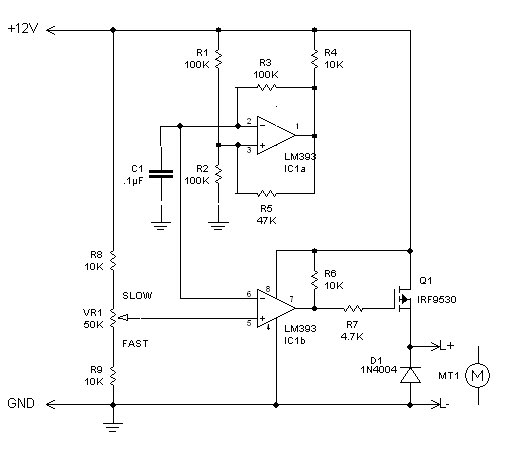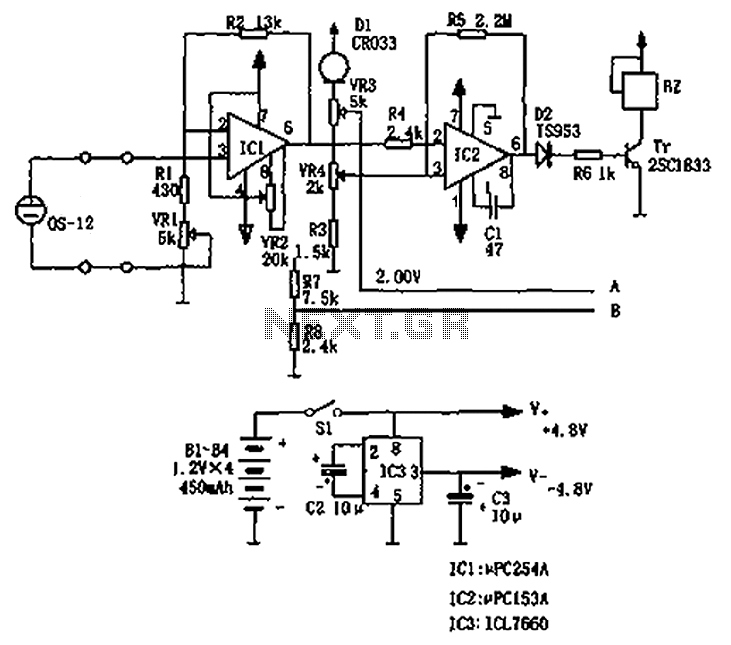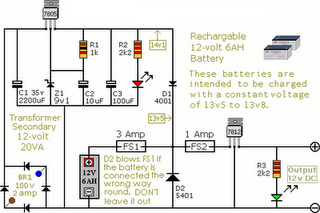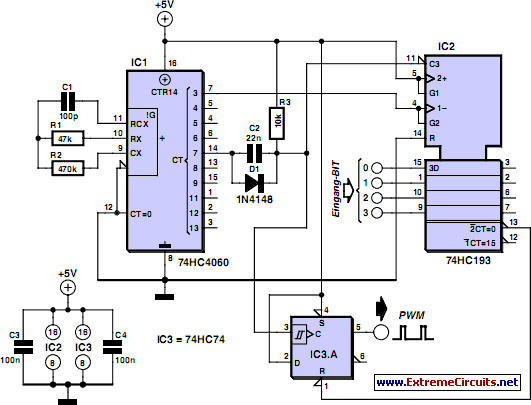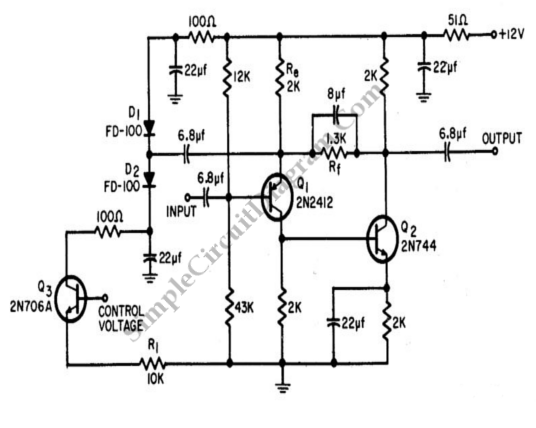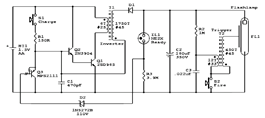
Solar Panel Based Charger And Small LED Lamp circuit
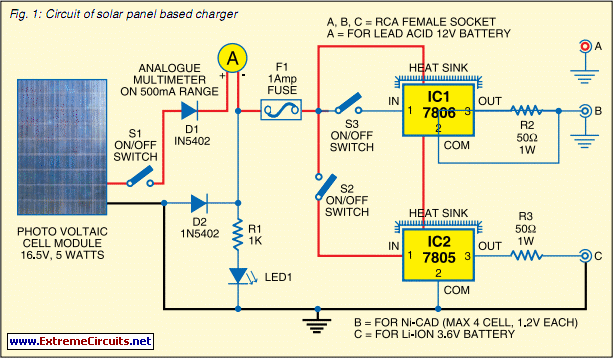
Savings on electricity bills can be achieved by utilizing alternative power sources. The photovoltaic module, or solar panel, described here can provide a power output of 5 watts. Under full sunlight conditions, the solar panel generates an output voltage of 16.5V and can deliver a current in the range of 300-350 mA. This panel is capable of charging three types of batteries: lead-acid, nickel-cadmium (Ni-Cd), and lithium-ion (Li-ion). Lead-acid batteries are frequently employed in emergency lighting and uninterruptible power supplies (UPS). The operation of the circuit is straightforward.
The photovoltaic module operates based on the principles of the photovoltaic effect, where sunlight is converted into electrical energy. The panel consists of multiple solar cells, typically made from silicon, which are connected in series and parallel configurations to achieve the desired voltage and current output. Under optimal sunlight conditions, the solar cells generate direct current (DC) electricity, which can be utilized for various applications, including battery charging.
The output voltage of 16.5V is particularly suitable for charging 12V lead-acid batteries, which are commonly found in automotive and backup power systems. To facilitate the charging process, a charge controller may be employed to regulate the voltage and current supplied to the battery, ensuring safe and efficient charging while preventing overcharging that can damage the battery.
The current output of 300-350 mA allows for charging smaller batteries efficiently. For lead-acid batteries, a typical charging current is often limited to 10-20% of the battery's capacity, which means that the solar panel can effectively charge batteries rated around 15-35 Ah. Similarly, Ni-Cd and Li-ion batteries can also be charged using the panel, although specific charging circuits and protection mechanisms should be implemented to accommodate their unique charging requirements.
In summary, the described solar panel presents a viable solution for reducing electricity costs by harnessing renewable energy. Its ability to charge multiple battery types makes it versatile for various applications, including renewable energy systems for homes, portable devices, and backup power solutions. The simplicity of the circuit design enhances its accessibility for users looking to adopt solar energy technology.You can save on your electricity bills by switching to alternative sources of power. The photovoltaic module or solar panel described here is capable of delivering a power of 5 watts. At full sunlight, the solar panel outputs 16.5V. It can deliver a current of 300-350 mA. Using it you can charge three types of batteries: lead acid, Ni-Cd and Li-ion. The lead-acid batteries are commonly used in emergency lamps and UPS. The working of the circuit is simple.. 🔗 External reference
The photovoltaic module operates based on the principles of the photovoltaic effect, where sunlight is converted into electrical energy. The panel consists of multiple solar cells, typically made from silicon, which are connected in series and parallel configurations to achieve the desired voltage and current output. Under optimal sunlight conditions, the solar cells generate direct current (DC) electricity, which can be utilized for various applications, including battery charging.
The output voltage of 16.5V is particularly suitable for charging 12V lead-acid batteries, which are commonly found in automotive and backup power systems. To facilitate the charging process, a charge controller may be employed to regulate the voltage and current supplied to the battery, ensuring safe and efficient charging while preventing overcharging that can damage the battery.
The current output of 300-350 mA allows for charging smaller batteries efficiently. For lead-acid batteries, a typical charging current is often limited to 10-20% of the battery's capacity, which means that the solar panel can effectively charge batteries rated around 15-35 Ah. Similarly, Ni-Cd and Li-ion batteries can also be charged using the panel, although specific charging circuits and protection mechanisms should be implemented to accommodate their unique charging requirements.
In summary, the described solar panel presents a viable solution for reducing electricity costs by harnessing renewable energy. Its ability to charge multiple battery types makes it versatile for various applications, including renewable energy systems for homes, portable devices, and backup power solutions. The simplicity of the circuit design enhances its accessibility for users looking to adopt solar energy technology.You can save on your electricity bills by switching to alternative sources of power. The photovoltaic module or solar panel described here is capable of delivering a power of 5 watts. At full sunlight, the solar panel outputs 16.5V. It can deliver a current of 300-350 mA. Using it you can charge three types of batteries: lead acid, Ni-Cd and Li-ion. The lead-acid batteries are commonly used in emergency lamps and UPS. The working of the circuit is simple.. 🔗 External reference
